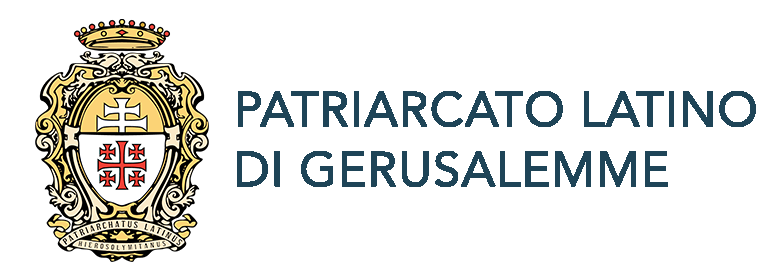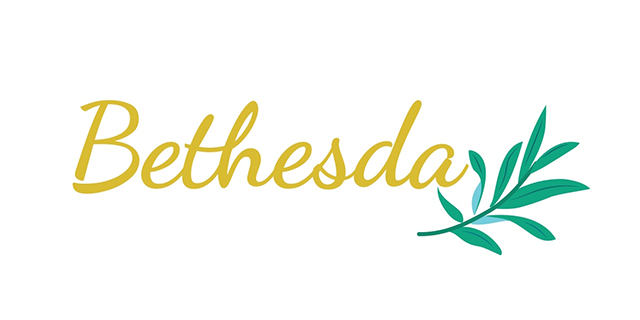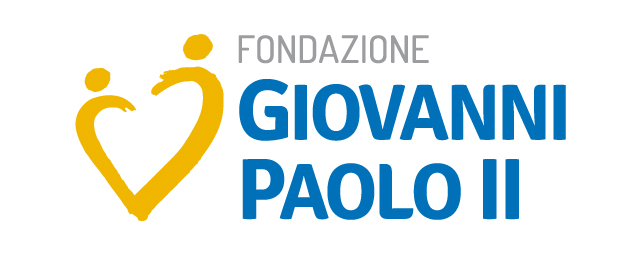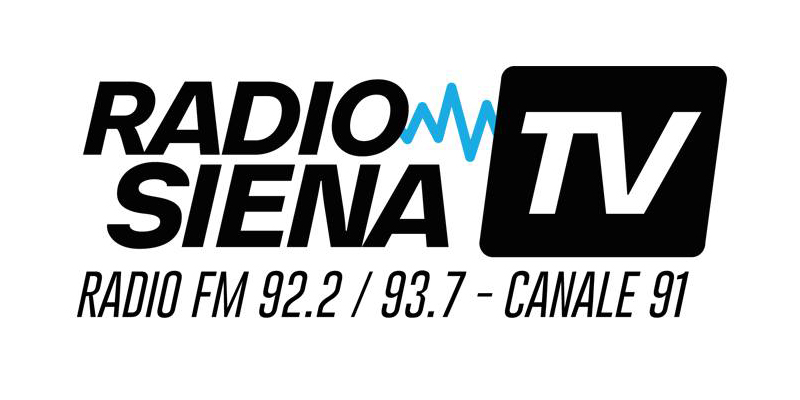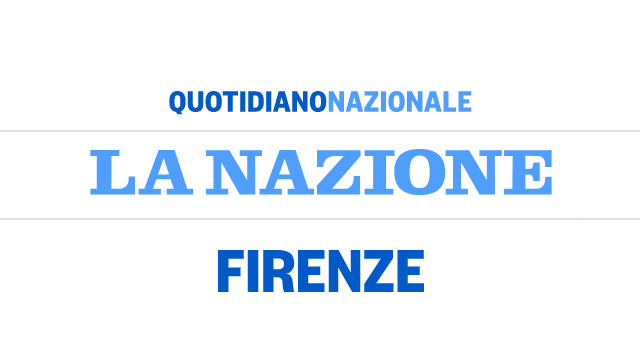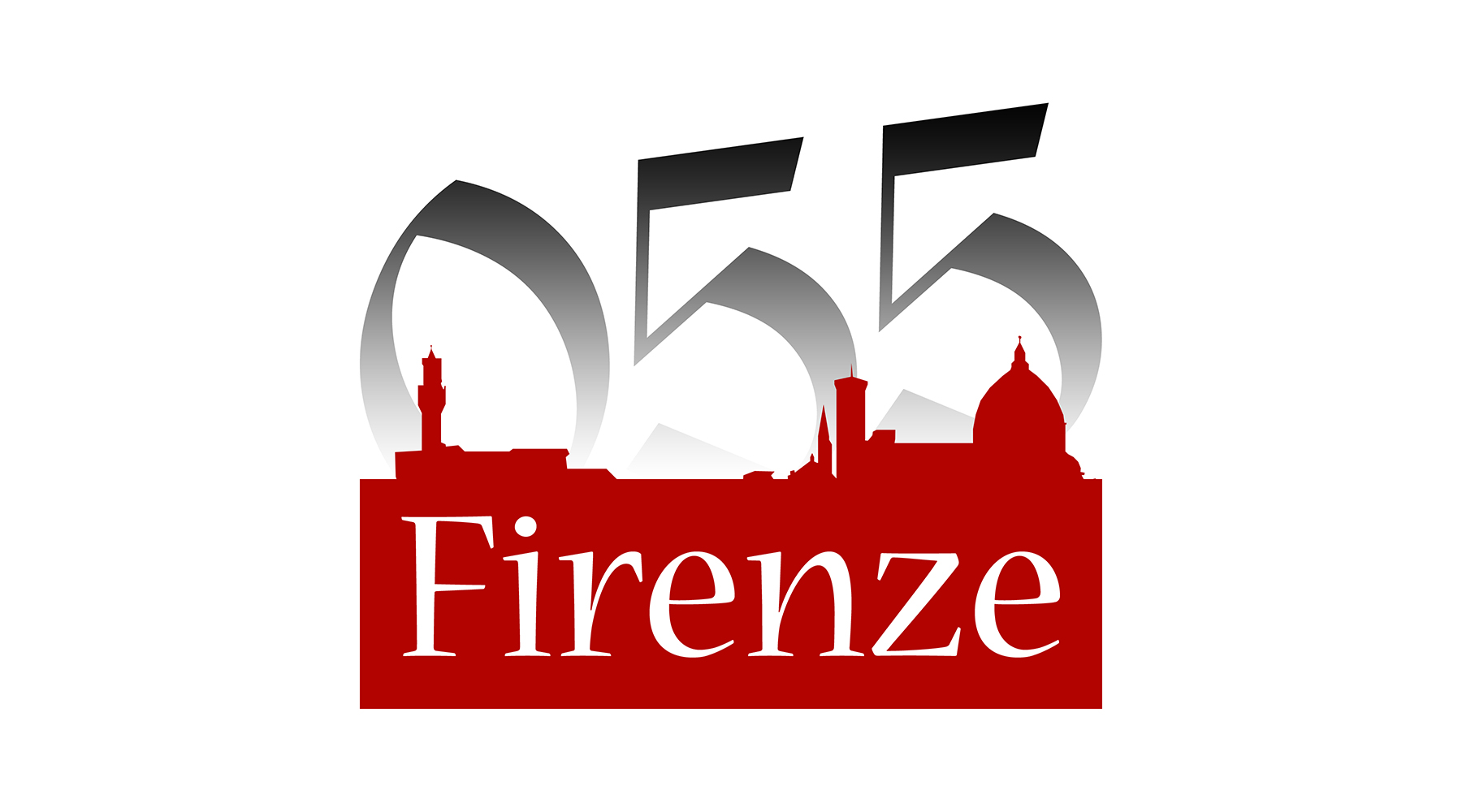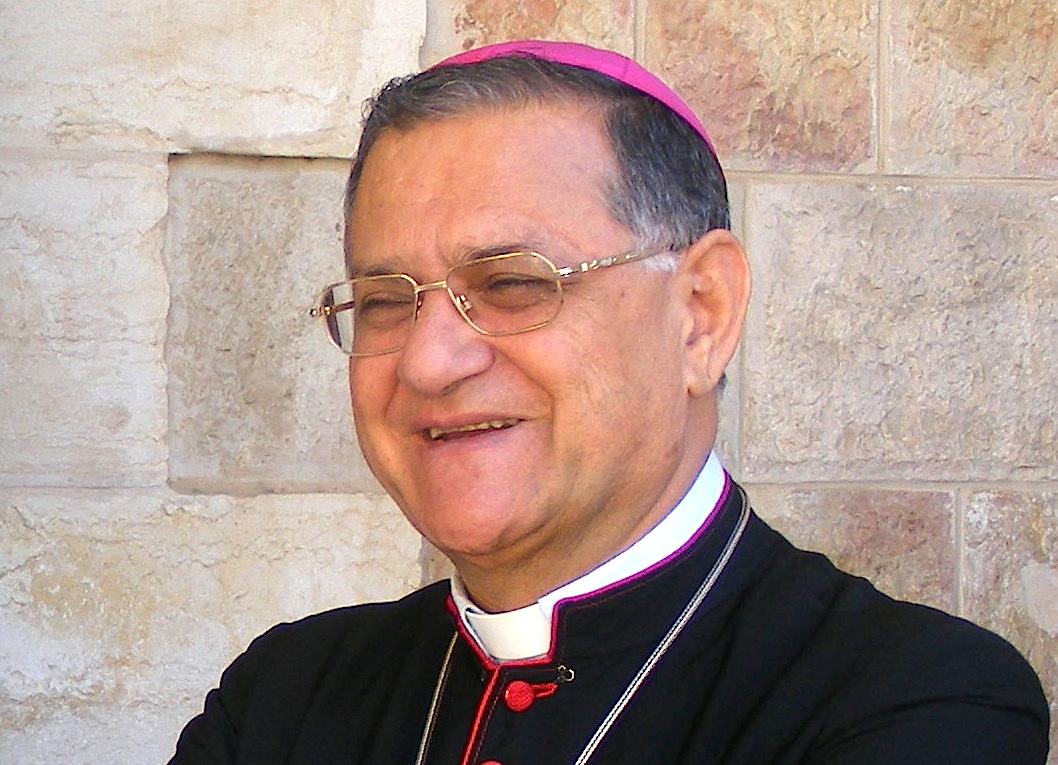
“Natale si avvicina. In quest’occasione desidero veramente la pace e la grazia per tutti gli abitanti di questa Terra Santa: per gli Israeliani e i Palestinesi, per i cristiani, i musulmani, gli ebrei e i drusi. Rivolgo allo stesso modo questo saluto anche ai nostri fedeli in Giordania e a Cipro, parte della nostra Diocesi di Gerusalemme. La nascita di Cristo ci invita a meditare sui valori fondamentali della pace, della speranza, dell’amore, della condivisione, dell’accoglienza, dell’ospitalità, della compassione e della dignità umana.”
Messaggio di Natale 2009
Per cominciare, vorrei dare il benvenuto a tutti i giornalisti qui presenti. Vi ringrazio per il bello, ma allo stesso tempo difficile lavoro d’informazione quotidiana che svolgete. Nel compierlo cercate la verità, impegnandovi a servirla. Molti giornalisti hanno pagato e continuano a pagare di persona per il servizio reso alla verità. L’informazione non è neutrale. Essa possiede una vera e propria dimensione etica, svolgendo una funzione di formazione. Informare i lettori su quanto sta accadendo nel mondo significa aiutarli a farsi un quadro obiettivo degli eventi, crescendo in una valutazione critica degli stessi e nella formazione di giudizi morali. Grazie ancora una volta e benvenuti.
Natale si avvicina. In quest’occasione desidero veramente la pace e la grazia per tutti gli abitanti di questa Terra Santa: per gli Israeliani e i Palestinesi, per i cristiani, i musulmani, gli ebrei e i drusi. Rivolgo allo stesso modo questo saluto anche ai nostri fedeli in Giordania e a Cipro, parte della nostra Diocesi di Gerusalemme. La nascita di Cristo ci invita a meditare sui valori fondamentali della pace, della speranza, dell’amore, della condivisione, dell’accoglienza, dell’ospitalità, della compassione e della dignità umana.
1. I nostri sogni di una riconciliazione in Terra Santa sembrano essere un’utopia. Nonostante i lodevoli sforzi da parte di politici e di uomini di buona volontà per trovare una soluzione al conflitto in corso, tutti i tentativi volti a raggiungere la pace, sia da parte palestinese che israeliana, sono falliti. La realtà contraddice i nostri sogni. Ecco alcuni esempi:
A. I Palestinesi non hanno ancora un proprio Stato, in cui poter vivere in pace e in armonia con i loro vicini di Israele. I Palestinesi si trovano ancora a soffrire per l’occupazione, la difficile situazione economica, la distruzione di numerose abitazioni a Gerusalemme Est e per le divisioni politiche interne. Migliaia di persone che vivono a Gerusalemme, a Gaza o nei Territori Palestinesi, separati dalle loro famiglie, sono in attesa di potersi ricongiungere ai loro cari. Un anno dopo la guerra di Gaza, essa soffre ancora per il blocco economico, per la mancanza di libertà di movimento e per le conseguenze dell’inquinamento dell’acqua dolce e del mare, fatto che mette a repentaglio la salute di 1, 5 milioni di cittadini, il 50% dei quali sono di età inferiore ai 14 anni.
B. Lo status finale di Gerusalemme è ancora in discussione. Molti sono i cambiamenti in atto nella Città Santa che, tendendo a fare di Gerusalemme una città «esclusiva», minacciano la sua vocazione ad essere città universale per tre religioni e due popoli. Gerusalemme è chiamata infatti ad essere una città in cui i suoi abitanti coesistano pacificamente. Purtroppo, la moschea di Al Aqsa è stata teatro di recenti scontri tra fondamentalisti ebrei- che hanno tentato di invadere Al Haram Al Sharif – e giovani palestinesi che volevano difendere il loro luogo Sacro. L’impatto di questi spiacevoli avvenimenti non deve essere sottovalutato.
C. Gli Israeliani vivono in una grande paura che impedisce loro di prendere decisioni coraggiose per porre fine al conflitto. Il muro di separazione è l’espressione concreta di questa paura. Speravamo vivamente che il progettato scambio di prigionieri tra Israeliani e Palestinesi si sarebbe potuto realizzare, favorendo lo sviluppo di nuove positive iniziative. Siamo molto delusi dei ritardi che hanno accompagnato questa vicenda.
2. Tuttavia, la nostra speranza è ancora viva. La speranza è la capacità di «vedere Dio in mezzo alle difficoltà». Essa ci spinge a cambiare la realtà in cui ci troviamo. Sperare non significa cedere al male, ma piuttosto affrontarlo (Dichiarazione di Kairos, 2009). In Terra Santa non è tutto senza speranza. Ci sono alcuni segni positivi, come ad esempio:
A. Il blocco parziale per la costruzione degli insediamenti e la rimozione di oltre cinquanta checkpoints in Cisgiordania. Questa decisione da parte dell’esercito israeliano ha decisamente migliorato la libertà di movimento per i Palestinesi e così pure la situazione economica. Certo non è ancora sufficiente, però si tratta di un passo avanti. Ci auguriamo che possano presto seguire altre misure. Inoltre i Palestinesi hanno espresso la loro crescente resistenza in modo non violento, segno di un voler procedere nella giusta direzione.
B. La generosità della comunità internazionale. Il sostegno finanziario della comunità internazionale è un grande segno di speranza. Dopo la guerra di Gaza, i governi, le Chiese e i singoli hanno dato avvio ad una catena di solidarietà. Ringraziamo tutti i donatori ed assicuriamo loro la nostra preghiera in questo tempo di Natale.
C. La visita del Santo Padre nel maggio 2009. Papa Benedetto XVI è stato ben accolto in Giordania, Israele e Palestina. Un sentito ringraziamento va ai governi di questi paesi. Il Santo Padre è venuto in Terra Santa come pellegrino di pace e di riconciliazione. Risuonano ancora le sue parole: «Mai più spargimento di sangue! Mai più combattimenti! Mai più terrorismo! Mai più guerre! Al contrario, facciamo in modo di spezzare il circolo vizioso della violenza». Possiamo aggiungere: «Mai più anti-semitismo, mai più islamofobia, mai più paura e odio!». I vari discorsi, le omelie, gli incontri e i gesti con cui il Santo Padre si è rivolto a noi durante la sua visita, hanno avuto lo scopo di promuovere il dialogo interreligioso ed ecumenico, la riconciliazione e la giustizia, incoraggiando la comunità cristiana a rimanere in Terra Santa e ad assumere un ruolo attivo nella vita del Paese. Stiamo continuando a raccogliere i frutti di questa sua visita:
a. Il massiccio afflusso di pellegrini. Secondo il Ministero Israeliano del Turismo, nel corso del solo mese di ottobre ben 330.000 pellegrini hanno visitato la Terra Santa. Il numero dei visitatori nel 2009 sarà così pari a quello dell’anno 2000, che rappresentò un record nella storia dei pellegrinaggi, contando 2.700.000 pellegrini.
b. La costruzione a Betlemme di una nuova Clinica Pediatrica, intitolata a Benedetto XVI, finanziata per la maggior parte dalla Fondazione Giovanni Paolo II, dalla Chiesa cattolica e da altre istituzioni civili italiane.
c. L’Università di Madaba in Giordania, la cui prima pietra è stata benedetta da Papa Benedetto XVI nel corso della sua ultima visita. Tale progetto vuole contribuire da parte nostra ad innalzare la qualità dell’offerta formativa, assicurando il meglio nel settore dell’istruzione e della formazione, come abbiamo già cercato di fare anche tramite l’Università di Betlemme.
d. La costruzione a Gerusalemme di un complesso residenziale per 72 giovani coppie. Gerusalemme Est soffre infatti di una grave carenza di alloggi. È ancora difficile ottenere permessi di costruzione e il lavoro è molto costoso. Questo progetto dovrebbe essere un progetto-pilota per ispirare altri progetti simili.
e. La coraggiosa decisione di Benedetto XVI di convocare un Sinodo per il Medio Oriente che si terrà nel mese di ottobre 2010. Questo ci darà l’opportunità di concentrarci nuovamente sulle grandi sfide che le Chiese in Medio Oriente si trovano ad affrontare.
f. La beatificazione di suor Marie Alphonsine, fondatrice della Congregazione delle Suore del Rosario. Questo grande evento significa che i fedeli di Terra Santa, fieri e pieni di gioia nei confronti di Marie Alphonsine, possono trovare in lei un modello di virtù eroiche, contando nello stesso tempo sulla sua intercessione. Desidero sottolineare infatti che questa suora è nata a Gerusalemme, ad alcuni metri di distanza dal Patriarcato Latino ed ha servito a Gerusalemme, Betlemme e in diverse parrocchie della Terra Santa, anche in Giordania. Si tratta così veramente di un modello da seguire. La sua festa ricorrerà ogni 19 novembre.
Conclusione. Il dono più grande che possiamo desiderare, più del denaro e della ricchezza, è quello della pace. È un desiderio comune a tutti gli abitanti di questo Paese, Israeliani e Palestinesi. La pace è un dono di Dio agli uomini di buona volontà. Dobbiamo guadagnarcelo. Sappiamo che ci sono molti uomini e donne di buona volontà tra gli Israeliani e i Palestinesi. Preghiamo che un giorno la bella visione di Isaia possa diventare realtà: «Alla fine dei giorni, il monte del tempio del Signore sarà eretto sulla cima dei monti e sarà più alto dei colli; ad esso affluiranno tutte le genti … Forgeranno le loro spade in vomeri, le loro lance in falci; un popolo non alzerà più la spada contro un altro popolo, non si eserciteranno più nell’arte della guerra» (Is 2,2-5).
Buon Natale e un Felice Anno Nuovo a tutti voi.
+ Fouad Twal, Patriarca latino
Christmas Message 2009

December 22, 2009
“Christmas approaches. Therefore I wish peace and Grace to all the inhabitants of this Holy Land: Palestinians and Israelis, Christians, Muslims, Jews and Druses. I extend these greetings to our faithful in Jordan and Cyprus who are also part of this diocese. The Birth of Christ offers several values to meditate upon: peace, hope, love, sharing, hospitality, compassion and human dignity.”
Christmas Message 2009
First of all, I want to welcome you, all the journalists gathered here today, and thank you for the good but difficult work you perform. Through this work you have the opportunity to seek and serve the truth. Many journalists have paid and continue to pay a real cost to their lives due to their dedication to the truth. Information is not neutral. It has a real ethical dimension. Through informing the readers about what happens in the world, you help them to have an objective and ethical evaluation of the events themselves. Thank you and welcome.
Christmas approaches. Therefore I wish peace and Grace to all the inhabitants of this Holy Land: Palestinians and Israelis, Christians, Muslims, Jews and Druses. I extend these greetings to our faithful in Jordan and Cyprus who are also part of this diocese. The Birth of Christ offers several values to meditate upon: peace, hope, love, sharing, hospitality, compassion and human dignity.
1. Our dreams for a reconciled Holy Land seem to be utopia.Despite the praiseworthy efforts of politicians and men of good will to find a solution to the ongoing conflict, all of us, Palestinians and Israelis, have all failed in achieving peace. The reality contradicts our dreams. Here are some examples:
A. Palestinians still do not have their own Statewhere they can live in peace and harmony with their Israeli neighbors; they still suffer from Occupation, difficult economical situation, destruction of houses in East Jerusalem and internal divisions, thousands of persons living in Jerusalem or Gaza or the Palestinian Territories are waiting for family reunion; one year after Gaza war, Gaza still suffers from economical siege, lack of freedom of movement and from the contamination of its sea and water, which endangers the health of 1.500.000 citizens among which 50% are under the age of 14.
B. The final status for Jerusalem is still under discussion. Many changes are taking place in the Holy City which may alter its vocation as a Universal city for three religions and two peoples, making it into an exclusive city. Indeed, Jerusalem is called to be a city of peaceful co-existence between its inhabitants. Unfortunately, the Al Aksa compound recently witnessed confrontations between Fundamentalists Jews who tried to invade Al Haram Al Sharif and the young Palestinians, who wanted to defend their Holy Place. The impact of these regrettable events should not be underestimated.
C. Israelis live under great fearwhich prohibits them from taking courageous decisions to end the conflict. The Separation Wall is a material manifestation of this fear. On another side, we had strongly hoped that the exchange of prisoners between Israelis and Palestinians would succeed and give hope to the Palestinians and Israelis. We feel frustrated by the delay.
2. Nevertheless, our hope is still alive.Hope is the “capacity to see God in the midst of trouble. It encourages us to change the reality in which we find ourselves. Hope means not giving in to evil, but rather standing up to it” (Kairos Palestine Document, 2009). In the Holy Land, everything is not desperate. There are a few signs of hope which are:
A. The partial freeze on the construction of settlements and the removal of over fifty checkpoints within the West Bank.This decision from the Israeli Military has markedly improved the freedom of movement for Palestinians and the economic situation. It is not enough, but, a step forward. We hope that other steps may soon follow. On the other hand, Palestinians are more and more expressing resistance in a non violent fashion. It is a positive sign pointing in the right direction.
B. The generosity of the international community: the financial support of the international community is a strong sign of hope. After the Gaza war, there came into being a chain of solidarity from governments, churches and individuals. We thank all the donors and promise to pray for them on Christmas.
C. The visit of the Holy Father in May 2009. Pope Benedict was well received in Jordan, Israel and Palestine. A great thanks to the governments of the three countries. He came here as pilgrim of peace and reconciliation. “No more bloodshed! No more fighting! No more terrorism! No more war! Instead let us break the vicious circle of violence.” We can add: “No more anti-Semitism, no more Islamophobia, no more fear and hatred”. With such words, the Holy Father addressed us during His visit. His different speeches, homilies, meetings and gestures aimed at promoting inter-religious and ecumenical dialogue, reconciliation and justice and at encouraging the Christian community to remain in the Holy Land and to take an active role in the life of the Country. We continue to gather fruit from his visit:
a. The massive arrival of pilgrims.Last October, according to the Israeli Ministry of Tourism, 330.000 pilgrims visited the Holy Land. The year 2009 will be equal to the year 2000, which was a record in the history of pilgrimages, with 2,700,000 pilgrims.
b. The construction of a new pediatric Hospital in Bethlehem named after Benedict XVI, mainly financed by the John Paul II Foundation and other church and civil institutions in Italy.
c. Madaba University in Jordan. Pope Benedict XVI blessed the cornerstone during his last visit. Such a project will represent our contribution in offering excellence in education as we try to do in Bethlehem University.
d. Construction of a housing project in Jerusalem for 72 young couples: Eastern Jerusalem suffers from a severe shortage in housing. Permits are given only with difficulty. Construction is expensive. This project should be a pilot for others.
e. The courageous decision of Benedict XVI to summon a Synod for the Middle East to take place in October 2010. This will give us the opportunity to focus again on the big challenges facing the Churches in the Middle East.
f. The beatification of sister Marie Alphonsine, foundress of the Rosary Sisters. This great event means that the faithful, with real pride and joy, find in her a model of heroic virtues and an intercessor. I want to highlight the fact that this sister was born in Jerusalem, some meters away from the Latin Patriarchate. She also served in different parishes of the Holy Land, including Jordan. She is a model to follow. We will celebrate her feast each 19th of November.
Conclusion. The best gift we seek, above money and wealth, is peace. It is the wish of all the inhabitants of this Land: Israelis and Palestinians alike. Peace is a gift of God for men of good will. We have to deserve it. We are sure that there are many men and women of good will among Israelis and Palestinians. We pray that one day, the beautiful vision of Isaiah will become a reality: “In days to come, the mountain of the Lord’s house shall be established as the highest of the mountains, and shall be raised above the hills; all the nations shall stream to it (…) they shall beat their swords into plough-shares, and their spears into pruning hooks; nation shall not lift up sword against nation, neither shall they learn war any more” (Is. 2: 2-5).
Happy Christmas and a blessed New Year to all of you.
+ Fouad Twal, Patriarch
Mensaje de Navidad 2009

22 de diciembre de 2009
Doy la bienvenida a todos los periodistas reunidos hoy, y os doy las gracias por el hermoso pero difícil trabajo que efectuáis. Cumpliendo vuestro trabajo, es la verdad lo que vosotros buscáis y servís. Numerosos periodistas han pagado y pagan todavía con su persona su compromiso por la verdad. La información no es neutral. Ella tiene una real dimensión ética. Informando a los lectores de lo que pasa en el mundo, los formáis para que se hagan una idea objetiva de los sucesos y para formarse un juicio moral. ¡Gracias y bienvenidos!
Navidad nos acerca. En esta oportunidad, deseo Paz y Gracia a todos los habitantes de esta Tierra Santa: palestinos e israelíes, cristianos, musulmanes, judíos y drusos. Envío igualmente mis saludos a nuestros fieles de Jordania y Chipre, quienes forman parte, ellos también, de la Diócesis de Jerusalén. El Nacimiento de Cristo nos invita a meditar sobre los valores de la paz, la esperanza, el amor, la condivisión, la hospitalidad, la compasión y la dignidad humana.
1. Nuestros sueños de una Tierra Santa reconciliada parecen una utopía.
No obstante los loables esfuerzos desplegados por los políticos y los hombres de buena voluntad para encontrar una solución al conflicto en curso, nosotros todos, palestinos e israelíes, hemos fracasado en hacer llegar la paz. La realidad niega nuestros sueños. He aquí algunos ejemplos:
A. Los palestinos no tienen aún un Estado propio donde puedan vivir en paz y armonía con sus vecinos israelíes; siguen padeciendo la Ocupación, dificultades económicas, destrucción de casas en Jerusalén Oriental y divisiones políticas internas; millares de personas que viven en Jerusalén, en Gaza o en los Territorios palestinos están a la espera de poder reagrupar la familia; un año después la guerra, Gaza sufre todavía del bloqueo económico, de trabas a la libertad de movimiento, de la contaminación de su agua potable y de la polución del mar por las aguas servidas, situación que pone en peligro la salud de 1,5 millones de ciudadanos de los cuales el 50% tiene menos que 14 años de edad.
B. Él estatuto final de Jerusalén está todavía en discusión. Los numerosos cambios actuales, tendientes a hacer de Jerusalén una ciudad exclusiva, pone en riesgo de alterar la vocación de la Ciudad Santa de ser una ciudad santa para las tres religiones y los dos pueblos. Jerusalén está llamada a ser una ciudad en la cual los habitantes cohabiten pacíficamente. Desgraciadamente la Mezquita de Al-Aqsa, ha sido recientemente el teatro de enfrentamientos entre judíos fundamentalistas – que han tratado de invadir Al Haram Al Sharif – y jóvenes palestinos que quisieron defender su lugar santo. El impacto de estos sucesos desagradables no hay que subestimarlo.
C. Los israelíes viven en un gran miedo, lo que les impide que tomen decisiones audaces para poner fin al conflicto. El Muro de Separación es una manifestación concreta de este miedo. Por otra parte, esperamos ardientemente que el intercambio de prisioneros israelíes y palestinos se lleve a cabo, el mismo dará razones para creer en el éxito posible de otras buenas iniciativas. El retraso tomado en este asunto nos desilusiona mucho.
2. No obstante nuestra esperanza permanece siempre viva. La esperanza es la “capacidad de ver a Dios en medio de las dificultades. Ella nos anima a cambiar la realidad en la cual nos encontramos. Esperar significa no ceder al mal, sino, por el contrario, de hacerle frente” (Documento Kairos Palestina, 2009). No todo es desesperación en Tierra Santa. He aquí algunos signos positivos:
A. El congelamiento parcial de la construcción de colonias y la supresión de más que cincuenta puntos de controles en Cisjordania. Esta decisión de la Armada israelí ha notablemente mejorado la libertad de movimiento de los palestinos, así como la situación económica. Esto no es suficiente, pero es un paso adelante. Esperamos que se seguirán otros bien pronto. Por otra parte, los palestinos manifiestan cada vez más su resistencia de manera no violenta, lo que representa un hermoso progreso.
B. La generosidad de la comunidad internacional. El apoyo económico de la comunidad internacional es un gran signo de solidaridad. Después de la guerra de Gaza, Gobiernos, Iglesias y personas particulares han realizado una cadena de solidaridad. Agradecemos a todos los donantes y les aseguramos nuestras oraciones en este tiempo de Navidad.
C. La visita del Santo Padre en mayo del 2009. El Papa Benedicto ha sido bien recibido en Jordania, en Israel y en Palestina. Un gran agradecimiento vaya para los Gobiernos de los tres países. El ha venido aquí como peregrino de la paz y de la reconciliación. “¡Nunca mas efusión de sangre! ¡Nunca más combates! ¡Nunca más terrorismo! ¡Nunca más guerra! Al contrario, quebremos el círculo vicioso de la violencia.” Nosotros podemos agregar: – ¡Nunca más antisemitismo, islamofobia, miedo y odio! Los diferentes discursos, homilías, encuentros y gestos del Santo Padre han tenido por fin el de promover el diálogo interreligioso y ecuménico, la reconciliación y la justicia, y en dar ánimo a la comunidad cristiana a fin que permanezca en Tierra Santa y para que tome parte activa en la vida del país. Hoy todavía nosotros continuamos a cosechar los frutos de su visita:
a. La venida masiva de peregrinos. Según el Ministerio israelí de Turismo, en el curso del solo mes de octubre pasado, 330000 peregrinos han visitado Tierra Santa. En número de visitantes, el año 2009 igualará al año 2000 que, con 2,7 millones de peregrinos, posee el record en la historia de las peregrinaciones.
b. La construcción en Belén de una nueva Clínica Pediátrica Benedicto XVI, financiada principalmente por la Fundación Juan Pablo II y por diversas instituciones católicas y civiles italianas.
c. La Universidad de Mádaba, en Jordania, de la cual el Papa Benedicto XVI ha bendecido la Piedra Fundamental durante Su Visita. Con este proyecto queremos contribuir a ofrecer una educación de excelencia, como ya hemos intentado de hacerlo en la Universidad de Belén.
d. La construcción en Jerusalén de un complejo residencial para 72 matrimonios jóvenes. Jerusalén Oriental sufre una grave penuria de alojamientos; es siempre difícil obtener los permisos de construcción; los trabajos son costosos. Este proyecto piloto está destinado a inspirar los siguientes.
e. La decisión intrépida de Benedicto XVI de convocar un Sínodo para Medio Oriente. Sínodo que tendrá lugar en octubre de 2010. Esto nos dará la ocasión de concentrarnos de nuevo sobre los grandes desafíos con los cuales las Iglesias se confrontan en Medio Oriente.
f. La Beatificación de la Hermana María Alfonsina, fundadora de las Hermanas del Rosario. Este gran acontecimiento significa que lo fieles, llenos de alegría y orgullo, pueden encontrar en ella un modelo de virtudes heroicas y sentirse apoyados por su intercesión. Hago notar el hecho que esta religiosa ha nacido en Jerusalén, a algunos metros solamente del Patriarcado Latino. Ella ha servido también en diferentes parroquias de Tierra Santa y en Jordania. Ella es un modelo a imitar. Nosotros celebraremos su fiesta cada año, el 19 de noviembre.
Conclusión. El regalo que nosotros más deseamos, más que el dinero y la riqueza, es el de la paz. Este es el deseo de todos los habitantes de esta Tierra, israelíes y palestinos. La paz es un don de Dios para los hombres de buena voluntad. Tenemos que merecerlo. Sabemos que hay muchos hombres y mujeres de buena voluntad entre los israelíes y los palestinos. Rezamos a fin que un día la hermosa visión de Isaías llegue a ser una realidad: “Sucederá al fin de los tiempos, que la montaña de la Casa del Señor será afianzada sobre la cumbre de las montañas y se elevará por encima de las colinas. (…) Con sus espadas forjarán arados y podaderas con sus lanzas. No levantará la espada una nación contra otra ni se adiestrarán más para la guerra.” (Is. 2, 2-5).
¡Les deseo una Feliz Navidad y un santo año nuevo a todos vosotros!
+ Fouad Twal, Patriarca
رسالة الميلاد لسنة 2009

رسالة الميلاد لسنة 2009
>عيد الميلاد يقترب. ولذلك أتمنى السلام والنعمة لجميع سكان هذه الأرض المقدسة: الفلسطينيين والإسرائيليين، المسيحيين منهم والمسلمين واليهود والدروز. أقدم تهاني العيد أيضا لإخواننا المؤمنين في الأردن وقبرص الذين هم أيضا جزء من هذه الأبرشية. ميلاد السيد المسيح يعرض علينا عدة قيم للتأمل فيها: السلام والأمل، الشفقة والحب، المشاركة والمقاسمة، كرم الضيافة، الرحمة والكرامة الإنسانية.
رسالة الميلاد لسنة 2009
بداية، أرحب بكم وأشكركم على العمل الجميل والصعب الذي تقومون به كل يوم والذي من خلاله تسعون إلى خدمة الحقيقة. وقد دفع العديد من الصحفيين ولا يزالون يدفعون حياتهم ثمنا لنزاهتهم وخدمتهم للحقيقة. المعلومات ليست أبدا محايدة. انما لها طابع أخلاقي. ومن خلال إطلاع القراء حول ما يحدث في العالم أنتم تساعدونهم على أن يكوّنوا فكرة موضوعية تساعد على أخذ موقف أخلاقي. شكرا لكم مرة أخرى للخدمة التي تقومون بها. عيد الميلاد يقترب. ولذلك أتمنى السلام والنعمة لجميع سكان هذه الأرض المقدسة: الفلسطينيين والإسرائيليين، المسيحيين منهم والمسلمين واليهود والدروز. أقدم تهاني العيد أيضا لإخواننا المؤمنين في الأردن وقبرص الذين هم أيضا جزء من هذه الأبرشية. ميلاد السيد المسيح يعرض علينا عدة قيم للتأمل فيها: السلام والأمل، الشفقة والحب، المشاركة والمقاسمة، كرم الضيافة، الرحمة والكرامة الإنسانية.
- تبدو أحلامنا في السلام والمصالحة في الأرض المقدسة ضربا من المحال. وبالرغم من الجهود المشكورة من قبل السياسيين وذوي النوايا الحسنة لإيجاد حل للصراع الدائر بين الفلسطينيين والإسرائيليين، فان الواقع الأليم يتناقض مع أحلامنا. هنا بعض الأمثلة :
أ) الفلسطينيون ما زالوا بدون دولة تمكنهم من أن يعيشوا في سلام ووئام مع جيرانهم الإسرائيليين. وما زالوا يعانون من الاحتلال وصعوبة الوضع الاقتصادي، وتدمير المنازل في القدس الشرقية والانقسامات الداخلية. والآلاف من الأشخاص الذين يعيشون في القدس أو غزة أو في الأراضي الفلسطينية في انتظار لم شمل عائلاتهم. وبعد سنة من الحرب على غزة، ما زال القطاع يعاني من حصار اقتصادي وانعدام حرية الحركة من وإلى غزة، ومن تلوث مقلق لمياه بحرها، مما يعرض للخطر صحة 1.500.000 مواطن، منهم 50 ٪ تحت سن 14 سنة.
ب) والوضع النهائي لمدينة القدس لا يزال قيد المناقشة. تغييرات كثيرة تجري في المدينة المقدسة قد تؤثر على دعوتها الخاصة كمدينة شمولية تجمع الديانات الثلاث وشعبين. في الواقع، القدس مدعوة إلى أن تكون مدينة للتعايش السلمي بين سكانها. ولكن للأسف، الواقع يخالف الحقيقة. فباحة الأقصى شهدت مؤخرا مواجهات بين متطرفين يهود حاولوا اقتحام الحرم الشريف والشبان الفلسطينيين الذين كانوا يدافعون عنه. ولا يمكن التقليل من أهمية هذه الأحداث والاستهتار بأبعادها الداخلية والدولية.
ج. يعيش الإسرائيليون في ظل خوف كبير يمنعهم من اتخاذ قرارات شجاعة لوضع حد للصراع. الجدار الفاصل هو مظهر مادي يجسد هذا الخوف. من جانب آخر، لدينا أمل قوي في أن عملية تبادل الأسرى بين الإسرائيليين والفلسطينيين ستنجح وستعطي أملا للفلسطينيين والإسرائيليين. وكلنا يشعر بالإحباط بسبب تأخير هذا التبادل.
- ومع ذلك، أملنا لا يزال حياً.الأمل هو “القدرة على رؤية الله في خضم المتاعب والصعوبات، وهو الذي يشجعنا على تغيير الواقع الذي نعيش فيه. الأمل لا يعني الاستسلام للشر، وإنما مقاومته”. (إعلان كايروس، 2009) وفي الأرض المقدسة، ليس كل شيء موضع يأس. هناك الكثير من علامات الأمل نذكر بعضا منها:
أ) تجميد جزئي في بناء المستوطنات وإزالة خمسين حاجزا داخل الضفة الغربية. هذا القرار من الجيش الإسرائيلي قد أدخل تحسنا ملحوظا على حرية تنقل الفلسطينيين بين المدن والقرى وربما سيحسن الوضع الاقتصادي. ذلك لا يكفي، وإنما يشكل خطوة إلى الأمام. نأمل أن تتبعها خطوات أخرى قريباً. ومن ناحية أخرى، فإن الفلسطينيين هم أكثر وأكثر ميالون للتعبير عن ذاتهم من خلال مقاومة غير عنيفة. كلها إشارات ايجابية في الاتجاه الصحيح.
ب) الكرم من جانب المجتمع الدولي : الدعم المالي من المجتمع الدولي هو باعث قوي على الأمل. بعد حرب غزة، خرجت إلى حيز الوجود سلسلة تضامنية من جانب الحكومات والكنائس والأفراد. نشكر جميع الجهات المانحة ونعدهم أن نصلي من أجلهم في عيد الميلاد.
ج) زيارة قداسة البابا في أيار 2009: استُقبل البابا بنديكتوس السادس عشر بحفاوة في الأردن وإسرائيل وفلسطين. ونعبر عن عظيم شكرنا لحكومات الدول الثلاث. وقد جاء قداسته إلى هنا حاجاً من أجل السلام والمصالحة. ومما قاله: “لا لسفك الدماء! لا للقتال! لا للإرهاب! ولا للحرب! بدلا من ذلك دعونا نكسر الحلقة المفرغة من العنف”. ويمكننا أن نضيف: لا لمعادة السامية، ولا للخوف من الإسلام وربطه بالارهاب. وبكلمات مماثلة، توجه إلينا قداسة البابا خلال زيارته وخطاباته المختلفة والمبادرات التي قام بها من أجل تعزيز الحوار بين الأديان والحوار المسكوني، والدعوة الى المصالحة والعدالة في الأرض المقدسة. ونحن نواصل قطف الثمار من زيارته. ومنها:
1) وصول أعداد ضخمة من الحجاج. في أكتوبر الماضي ، حسبما ذكرت وزارة السياحة الإسرائيلية ، 330.000 حاجا زاروا الأراضي المقدسة. وسيكون العام 2009 مساويا لعام 2000 ، الذي سجّل رقما قياسيا في تاريخ الحج، مع قدوم 2،700000 حاج وسائح.
2) بناء مستشفى جديد للأطفال في بيت لحم يحمل اسم بنديكتوس السادس عشر ، وذلك بتمويل من مؤسسة يوحنا بولس الثاني والكنيسة الايطالية وغيرها من مؤسسات المجتمع المدني في ايطاليا.
3) جامعة مادبا في الأردن : بارك البابا بنديكتوس السادس عشر حجر الأساس خلال زيارته الأخيرة. مثل هذا المشروع سوف يمثل مساهمتنا في رفع مستوى التربية والتعليم تاما كما نفعل في جامعة بيت لحم.
4) بناء مشروع سكني في القدس لـِ 72 عائلة من الأزواج الشابة: القدس الشرقية تعاني من نقص حاد في السكن. تصاريح البناء تعطى بصعوبة والبناء مكلف. هذا المشروع يجب أن يكون رائداً لمشاريع أخرى.
5 ) إن القرار الشجاع الذي اتخذه بنديكتوس السادس عشر باستدعائه لسينودوس حول الشرق الأوسط في أكتوبر 2010 سوف يتيح لنا الفرصة للتركيز مرة أخرى على التحديات الكبيرة التي تواجه الكنائس في الشرق الأوسط.
6) تطويب الأخت ماري ألفونسين. تطويبها يعني الاعتراف بها مثالاً للفضائل البطولية وشفيعة لنا. و تأتي أهمية هذا الحدث من حقيقة أن هذه الأخت ولدت في القدس على مسافة أمتار قليلة من البطريركية اللاتينية. وقد خدمت في القدس وبيت لحم ومدن أخرى من الأرض المقدسة والأردن. إنها مثال يحتذى به وشفيعة قوية. سيكون لها عيد سنوي في التقويم. في الـ 19 من تشرين الثاني كلّ سنة سوف نحتفل بعيد الطوباوية ماري ألفونسين غطاس.
الخاتمة: أفضل هدية نسعى إليها، هدية تسمو على المال والثروة ، هي السلام. إنها أمنية جميع سكان هذه الأرض: الإسرائيليين والفلسطينيين على حد سواء. السلام هو هبة من الله لذوي الإرادة الحسنة. وعلينا أن نستحقها. نحن متأكدون أن هناك الكثير من الرجال والنساء ذوي الإرادة الطيبة بين الإسرائيليين والفلسطينيين. نصلي من أجل السلام ومن اجل أن تتحقق الرؤية الجميلة التي وردت في سفر اشعياء: “ويكون في آخر الأيام، أن جبل بيت الرب يوطد في رأس الجبال، ويرتفع فوق التلال، وتجري إليه جميع الأمم… ويحكم بين الأمم، ويقضي للشعوب الكثيرين، فيضربون سيوفهم سككا، وأسنتهم مناجل. فلا ترفع أمة على أمة سيفاً، ولا يتعلمون الحرب من بعد”(أش 2 : 2-5). عيد ميلاد مجيد وسنة جديدة مباركة لكم جميعا.
† البطريرك فؤاد الطوال
Weihnachtsbotschaft 2009

Ich heiße alle Journalisten, die sich heute hier versammelt haben, herzlich willkommen und danke Ihnen für die gute aber auch schwierige Arbeit, die Sie leisten. Durch diese Arbeit haben Sie die Gelegenheit, die Wahrheit zu suchen und ihr zu dienen. Zahlreiche Journalisten setzen sich mit ihrer ganzen Person für die Wahrheit ein, der sie sich verpflichtet haben, und manche haben teuer dafür bezahlt. Information ist nicht neutral. Sie hat eine reale ethische Dimension. Wenn Sie die Leser darüber informieren, was in der Welt passiert, dann helfen Sie ihnen, sich eine objektive Meinung über die Ereignisse und ein moralisches Urteil zu bilden. Danke und herzlich willkommen.
Weihnachten nähert sich, und deshalb wünsche ich allen Einwohnern des Heiligen Landes Frieden und Gnade: Palästinensern, Israelis, Christen, Moslems, Juden und Drusen. Ich richte meine Wünsche auch an die Gläubigen in Jordanien und Zypern, die auch zur Diözese von Jerusalem gehören. Die Geburt Christi lädt uns ein, über folgende Werte nachzudenken: Friede, Hoffnung, Liebe, Miteinander-Teilen, Gastfreund-schaft, Mitgefühl und Menschenwürde.
1. Unser Traum von Versöhnung im Heiligen Landes scheint utopisch.
Trotz der lobenswerten Anstrengungen, die Politiker und Menschen guten Willens unternommen haben, um eine Lösung für den aktuellen Konflikt zu finden, sind wir alle, Palästinenser und Israeli daran gescheitert, den Frieden voranzutreiben. Die Wirklichkeit straft unsere Träume Lügen. Einige Beispiele:
A. Die Palästinenser haben noch immer keinen eigenen Staat, in dem sie in Frieden und Harmonie mit ihren israelischen Nachbarn leben können; sie leiden immer noch unter der Besetzung, den wirtschaftlichen Schwierigkeiten, der Zerstörung der Häuser in Ost-Jerusalem und den innenpolitischen Uneinigkeiten; tausende Menschen in Jerusalem, im Gazastreifen und den palästinensischen Gebieten warten auf Familienzusammenführung; ein Jahr nach dem Krieg leidet Gaza noch immer unter der wirtschaftlichen Belagerung, Einschränkung der Bewegungsfreiheit, Verseuchung seines Süßwassers und der Verschmutzung des Meeres durch Abwässer. Diese Situation gefährdet die Gesundheit von 1,5 Millionen Menschen, wovon 50% unter 14 Jahren sind.
B. Der endgültige Status von Jerusalem wird noch verhandelt. Die zahlreichen aktuellen Änderungen, die darauf abzielen, aus Jerusalem eine exklusive Stadt zu machen, drohen den universalen Auftrag der Heiligen Stadt, Stadt für drei Religionen und zwei Völker zu sein, zu untergraben. Jerusalem ist gerufen, eine Stadt zu sein, in der die Einwohner in Frieden miteinander leben können. Unglücklicherweise wurde die Al-Aksa-Moschee erst kürzlich zum Schauplatz von Auseinandersetzungen zwischen jüdischen Fundamentlisten – die versucht hatten, den Al Haram Al Sharif zu besetzen – und jungen Palästinensern, die ihren heiligen Ort verteidigen wollten. Die Auswirkungen dieser bedauerlichen Ereignisse dürfen nicht unterschätzt werden.
C. Die Israelis leben in einer großen Angst, die sie lähmt, mutige Entscheidungen zu treffen, um den Konflikt zu beenden. Die Trennungsmauer ist konkreter Ausdruck dieser Angst. Gleichzeitig hoffen wir sehnlich, dass der Gefangenenaustausch zwischen Israel und Palästina von Erfolg gekrönt sein und Grund zur Hoffnung geben wird, dass auch andere gute Initiativen erfolgreich sein können. Die Verzögerung in dieser Angelegenheit enttäuscht uns sehr.
2. Nichtsdestotrotz ist unsere Hoffnung noch immer lebendig. Hoffnung ist die „Fähigkeit, Gott inmitten der Schwierigkeiten zu erkennen. Sie gibt uns die Kraft, auf eine Veränderung unserer heutigen Wirklichkeit hinzuwirken. Hoffnung bedeutet nicht, dem Bösen nachzugeben, sondern vielmehr uns dagegen aufzulehnen und am Widerstand festzuhalten.“ (Kairos-Palästina-Dokument 2009) Aber nicht alles im Heiligen Land ist hoffnungslos. Es gibt auch positive Zeichen:
A. Der Teilstopp des Siedlungsbaus und die Beseitigung von mehr als 5o Checkpoints in der West Bank. Diese Entscheidung der israelischen Armee hat sowohl die Bewegungsfreiheit der Palästinenser als auch ihre wirtschaftliche Situation deutlich verbessert. Das ist zwar noch nicht befriedigend, aber es stellt einen Fortschritt dar. Wir hoffen, dass noch andere Schritte folgen werden. Wir betrachten es auch als Fortschritt, dass die Palästinenser mehr und mehr einen gewaltlosen Widerstand als Ausdrucksform wählen.
B. Die Großzügigkeit der internationalen Gemeinschaft. Nach dem Gaza-Krieg haben Regierungen, Kirchen und Privatpersonen eine Solidaritätskette gebildet. Diese finanzielle Unterstützung der internatio-nalen Gemeinschaft ist ein sehr schönes Zeichen. Wir danken allen Spendern und versichern euch unserer Gebete in dieser Weihnachtszeit.
C. Der Besuch des Heiligen Vaters im Mai 2009. Papst Benedikt wurde in Jordanien, Israel und Palästina herzlich empfangen. Ein großes Danke den Regierungen dieser drei Länder. Er ist als Pilger des Friedens und der Versöhnung gekommen. „Nie mehr Blutvergießen! Nie mehr Kämpfe! Nie mehr Terrorismus! Nie mehr Krieg! Lasst uns den Teufelskreislauf der Gewalt durchbrechen!“ Wir können hinzufügen: Nie mehr Antisemitismus, Islamophobie, Angst oder Hass. Die verschiedenen Reden, Predigten, Treffen und Gesten des Heiligen Vaters hatten die Förderung des interreligiösen Dialoges und die Ökumene zum Ziel, Versöhnung und Gerechtigkeit und sie zielen darauf ab, die christliche Gemeinshaft zu ermutigen, im Heiligen Land zu bleiben und aktiv am Leben des Landes Teil zu nehmen. Wir sind heute noch immer dabei, die Früchte seines Besuches zu ernten:
a. Starke Pilgerströme. Nach Auskunft des israelischen Tourismusministeriums besuchten allein im vergangenen Oktober 330 000 Pilger das Heilige Land. Die Besucherzahl des Jahres 2009 entsprach der Besucherzahl von 2000, das mit 2,7 Millionen Pilgern den Rekord in der Geschichte der Pilgerfahrten hielt.
b. Die Errichtung der neuen pädiatrischen Klinik in Bethlehem „Benedikt XVI“, die vor allem von der Stiftung „Johannes Paul II.“ und diversen anderen katholischen und zivilen Einrichtungen Italiens finanziert wurde.
c. Die Universität Madaba in Jordanien. Im Rahmen seines Besuches nahm Papst Benedikt XVI. die Grundsteinsegnung dieser Universität vor. Dieses Projekt soll ein Beitrag dazu sein, eine exzellente Ausbildung anbieten zu können, wie wir es bereits mit der Bethlehem-Universität praktizieren.
d. Die Konstruktion eines großen Wohnungskomplexes für 72 junge Paare in Jerusalem. Ost-Jerusalem leidet unter einer großen Wohnungsknappheit; es ist äußerst schwierig, Baugenehmigungen zu bekommen; Bauten sind kostspielig. Dieses Pilotprojekt soll zu weiteren Projekten anregen.
e. Die mutige Entscheidung Papst Benedikt XVI., eine Synode für den Mittleren Osten einzuberufen, die im Oktober 2010 stattfinden wird. Dies wird uns Gelegenheit geben, uns aufs Neue auf die großen Heraus-forderungen zu konzentrieren, vor denen die Kirchen im Mittleren Osten stehen.
f. Die Seligsprechung von Schwester Maria Alphonsine, der Gründerin der Rosenkranzschwestern. Dieses große Ereignis macht deutlich, dass die Gläubigen, voller Freude und Stolz, in ihr ein Vorbild heroischer Tugend finden und sich auf ihre Fürbitte stützen können. Ich lege großen Wert darauf, zu betonen, dass diese Schwester nur einige Meter vom lateinischen Patriarchat entfernt in Jerusalem geboren wurde. Sie hat ihren Dienst verschiedenen Pfarreien im Heiligen Land zur Verfügung gestellt, unter anderem auch in Jordanien. Sie ist ein Vorbild, dem wir nachfolgen sollen. Wir werden ihr Fest jährlich am 19. November feiern.
Abschluss. Das Geschenk, das wir uns am meisten wünschen, mehr als Geld und Reichtum, ist Friede. Er wird von allen Einwohnern dieses Landes, Israelis und Palästinensern so sehr ersehnt. Der Friede ist ein Geschenk Gottes an alle, die guten Willens sind. Wir müssen ihn uns verdienen. Wir wissen, dass es unter den Israelis und unter den Palästinensern viele Menschen guten Willens gibt. Wir beten, dass die schöne Vision Jesajas eines Tages Wirklichkeit werden möge: „Am Ende der Tage wird es geschehen: Der Berg mit dem Haus des Herrn steht fest gegründet als höchster der Berge; er überragt alle Hügel. Zu ihm strömen alle Völker. (…) Dann schmieden sie Pflugscharen aus ihren Schwertern und Winzermesser aus ihren Lanzen. Man zieht nicht mehr das Schwert, Volk gegen Volk, und übt nicht mehr für den Krieg.“ (Jesaja 2, 2-5)
Frohe Weihnachten und ein gesegnetes Neues Jahr für Sie alle.
+ Fuad Twal, Patriarch
Share this content:
